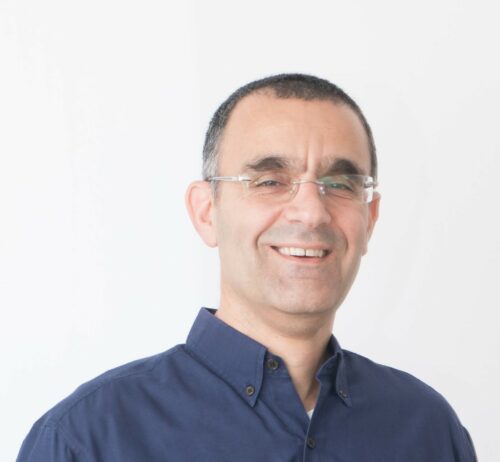SonicEdge is an Israeli company that is revolutionizing the audio industry by developing a unique speaker based on micro-electro-mechanical-systems (MEMS) technology. The company was founded in 2019 and has rapidly expanded worldwide, with an office at Technical University, Denmark. The SonicEdge speakers use active ultrasound modulation, a patented technology that generates sound in a completely novel way.
The SonicEdge speakers provide enhanced audio at low frequencies and extended operation across the full audio range and beyond. In addition to being smaller than other speaker technologies, these speakers are vibrationless, have a reduced back cavity, are easy to use and integrate, and can be manufactured with high uniformity, similar to semiconductors. SonicEdge’s initial focus is on the true wireless stereo (TWS) and hearable markets, where its speakers enable smaller, more comfortable, and better sounding earphones.
The SonicEdge MEMS speaker is expected to revolutionize the audio industry similar to how LED technology transformed the lighting industry, MEMS microphones changed the microphone industry, and digital transistors revolutionized electronics in the 1960s. The SonicEdge MEMS speaker has several advantages over existing technologies, including the following:
Miniaturization: The first SonicEdge speaker (SE1000) has a footprint of only 4.0mm × 6.5mm, which can easily fit into the ear canal, thereby providing freedom to the earphone designer.
• Scalability: The SE1000 MEMS speaker consists of about 400 identical cells (which will be described later in this article). This allows the freedom to increase the sound pressure level (SPL) by increasing the number of cells. Similarly, if it is desired to decrease the SPL, this can be achieved by reducing the number of cells. Additionally, using lots of small cells allows the shape of this MEMS speaker to be customized, but the same SPL will be maintained so long as the number of cells is identical.
Wide Frequency Response: The SonicEdge speaker covers a wide range of audio frequencies, from low to high. The SE1000 covers the full range of frequencies and enables enhanced active noise cancellation (ANC) performance as it provides extra SPL in the lower frequencies.
Durability and Reliability: The SonicEdge speaker is made of robust and durable materials that can withstand mechanical stress, temperature variations, and other environmental factors. This makes it suitable for various applications, including those in harsh environments.
Integration with Other Components: The SonicEdge speaker can co-exist with other sensors, such as microphones, accelerometers, and gyroscopes on a shared PCB since it generates minimal mechanical vibrations. This opens up possibilities for advanced audio systems, sensor arrays, and MEMS-based smart devices.
Chipset: The SE1000 is a chipset of two components: the MEMS chip and the electronic driver chip. Having two individual chips allows design freedom with respect to the end-application. For example, the MEMS speaker can be located in the ear canal without considering the location of the electronic driver chip.
Purely Digital Solution: The audio interface is purely digital, accepting an I2S or pulse-density modulation (PDM) signal.
Ultrasound active modulation
One of the unique features of the SonicEdge MEMS speaker is ultrasound active modulation. The speaker consists of two active membranes: one generating a pure ultrasound signal (the carrier frequency), and another membrane that modulates the sound frequency on the same carrier frequency. By mixing these two signals, the speaker produces audible sound frequencies. For example, to generate a 1kHz tone with a carrier frequency of 400kHz, the first membrane would generate a 400kHz frequency, and the second membrane would generate 401kHz (the modulated frequency of 400kHz + 1kHz). The resulting sound would be the 1kHz signal actively demodulated by this mixer. This principle creates a constant volume velocity source or a pump, which explains the pressure build-up at lower frequencies.
The speaker resonance frequency is at the ultrasound regime, which makes it simpler to design acoustic structures to manipulate the SPL response. For example, a cavity with a tube in front of the speaker will introduce a resonance to enhance a range of desired frequencies (say 3-5kHz).
Since the SonicEdge speaker’s operation principle is a pump, it isn’t subject to the non-linearity of traditional speakers for different dBFS (dB Full-Scale), which means the spectrum response of the speaker is linear from 0dBFS to –70dBFS. This, together with the fact that the speaker resonance is not in the audio range, allows an application sound engineer to design a simple (linear) equalizer.
Another significant advantage of the SonicEdge MEMS speaker is its minimal phase delay (or group delay) compared to existing technologies like voice coils. This advantage refers to the speaker’s ability to maintain precise phase alignment between the input audio signal and the generated sound waves. Sound waves radiated from the MEMS speaker can recreate the spatial cues and imaging captured in the original audio signal to enhance the listener’s experience by providing a more realistic and immersive soundstage. By reproducing sound signals accurately, SonicEdge MEMS speakers achieve superior sound quality and enable advanced signal processing techniques such as ANC. Additionally, this minimal phase delay preserves the timing and coherence of the audio signal, allowing the speaker to faithfully reproduce complex audio waveforms.
Other markets
The SonicEdge speakers are also suitable for free field applications, such as augmented reality (AR) and virtual reality (VR) glasses, mobile phones, automotive, and others. For supporting those markets, SonicEdge has plans to introduce suitable products in the future.
The unique features presented here make SonicEdge MEMS speakers an innovative solution in the audio industry that offers superior performance and quality compared to traditional speakers.

